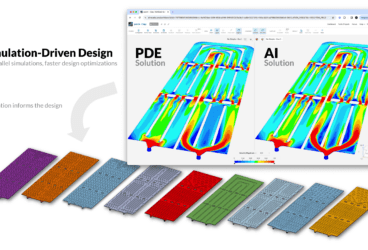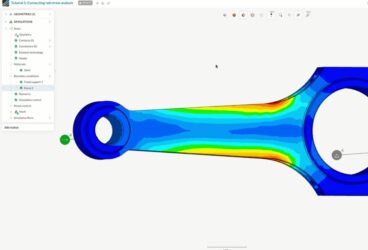Traditional engineering simulation tools that we’re all familiar with have always faced hurdles and limitations like cumbersome procurement, slow deployment, and isolated workflows. However, with the advent of cloud computing, cloud-native simulation is reshaping this landscape. This new paradigm eliminates these challenges and introduces affordability, immediate accessibility, and transparent, productive collaboration.
Key Takeaways
- Cloud-native simulation is leading the “new world” of engineering simulation by eliminating inefficiencies.
- Purchasing and deploying your simulation tool has never been easier thanks to cloud-native simulation’s accessibility and immediate availability.
- The cloud-native world enables customizable, online, and on-demand training for new users.
- No restrictions on who can simulate – SimScale enables the democratization of simulation access, leading to a more diverse, efficient, and enriched design process.
- In cloud-native simulation, the audit process is streamlined, with a transparent and easily accessible record of who took what action and when.
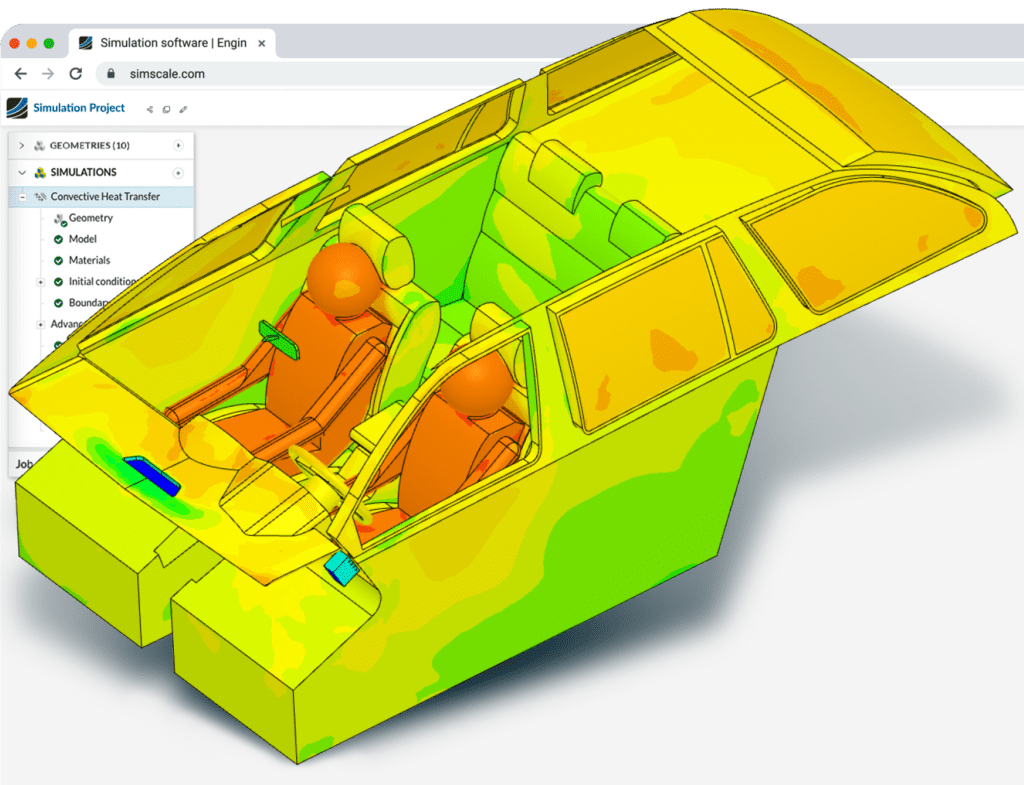
New World vs Old World: Redefining Efficiency
In contrast to the limitations of the past, cloud-native simulation like SimScale empowers engineers to innovate faster and navigate a streamlined and collaborative engineering design space. One way of looking at this is considering the analogy of a gardening hose.
A twisted hose hampers the flow of water and represents the inefficiencies of the “old world” of simulation. Even when this is untangled, a new kink will appear elsewhere, and without transparency, it’s hard to find where this inefficiency is. The free-flowing spray gun represents the “new world” of simulation, where the inefficiencies are gone, and the flow of water is not only streamlined but also in control, illustrating how cloud-native simulation can increase both efficiency and innovation.
In this article, I will show you how replacing legacy simulation tools with state-of-the-art, cloud-native simulation can streamline your team’s ability to design, innovate, and analyze more efficiently and effectively. You can also see a tabulated comparison at the end of the article.


1. Streamlining Purchasing and Deployment
The process of purchasing engineering simulation tools used to be characterized by long and protracted cycles, creating a considerable delay in acquiring the necessary design insight tools. Conversely, the cloud-native world introduces a revolutionary approach, offering affordability and immediate availability at no cost to kickstart your simulation work. This transformation in the purchasing landscape signifies a shift towards efficiency and accessibility.
Similarly, deployment used to suffer from sluggishness and installation bottlenecks with traditional, on-premise simulation tools. However, the cloud-native world presents a paradigm shift with instant deployment that negates the need for time-consuming installations.
Administrators can still wield control over access, immediately making resources available to anyone, on demand. Users can log in instantly, expediting the onboarding process, and the addition of a new user is streamlined to a simple task of entering their email address.
2. Facilitating Early Simulation Usage
Turning our attention to training and early usage, the old world demands large-scale organization for training sessions, often leading to unapproved training and the looming risk of new users making critical mistakes. On the contrary, the cloud-native world has ushered in an era of online and on-demand training, offering a flexible and customizable approach that can be seamlessly integrated into an organization. Support is not a distant concept; it’s ‘live’ and readily available when users need assistance. Time to answer is no longer measured in days or weeks but in minutes and seconds.
At SimScale, for example, the support system consists of real engineers collaborating with your team in real time, lessening the reliance on automated solutions.
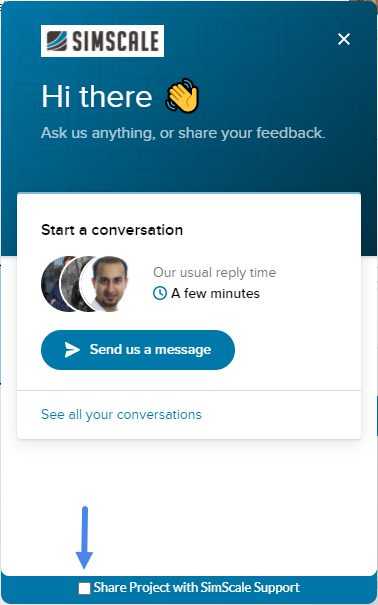
3. Fostering Established Simulation Usage
Legacy simulation tools are fundamentally limited to disconnected, siloed teams, isolated projects on local machines, and data that is hidden and individually owned. Peer-to-peer learning is constrained by individual availability, restricting its effectiveness. However, once a company is fully up and running with its new, cloud-native simulation tool, the collaboration between connected teams is by default fostered, and projects are easily shared with all interested parties at the click of a button. Even in cases where projects require restricted access, there’s an option to form private teams. Administrators retain full access, eliminating the risk of valuable data being lost on a hard drive. Users can support each other within projects, and experts can offer guidance seamlessly within the validation process.
The philosophy of not restricting who can simulate is a cornerstone of the cloud-native world. By front-loading simulations early in the design process, SimScale enables everyone to experiment and learn at the initial stages, producing better designs faster than was previously possible. The democratization of simulation access ensures that input is solicited from everyone, leading to a more diverse and enriched ideation process. Templates, pre-defined by seasoned simulation engineers or SimScale’s own, can further empower new users to contribute meaningfully and confidently, knowing they are working within controlled guard rails. This inclusivity means that, with the support and guidance of experts, everyone can engage in hands-on learning and experimentation.
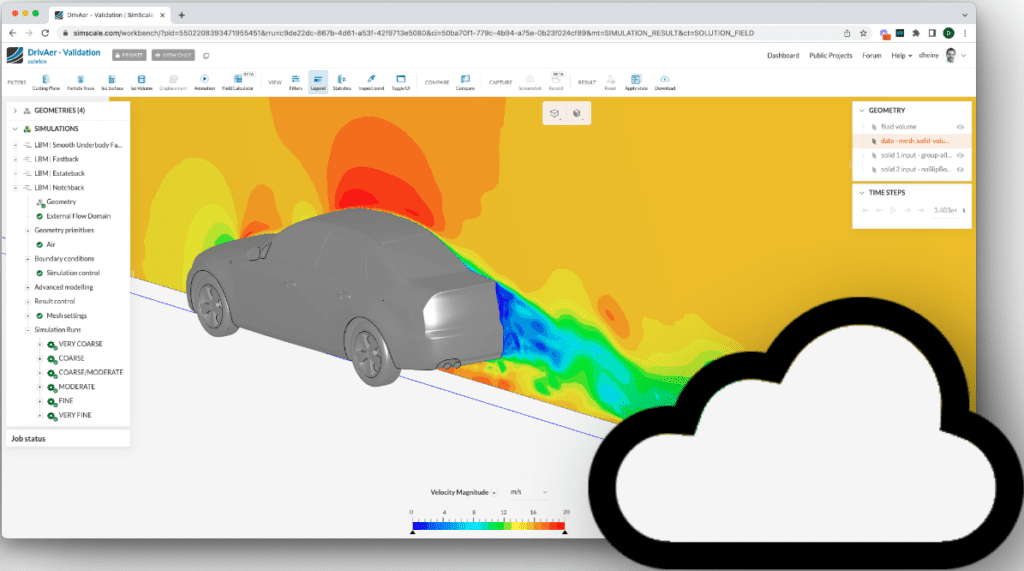
The transparent usage model in the cloud-native world stands in stark contrast to the old world’s opaqueness. License utilization is crystal clear, providing organizations with the ability to discern their actual needs and optimize costs accordingly. Nobody wants to pay for things they aren’t using, nor should they.
Users’ skill levels are transparently visible, facilitating timely support interventions before errors are made or time is wasted. Simulations linked to real-world projects offer insights into the value they added, allowing organizations to evaluate their tools’ and teams’ effectiveness and identify areas for improvement in subsequent design cycles.
The integration of simulation into the design and approval processes represents a significant departure from the old world’s compartmentalization. With legacy tools, simulation sits outside the process, creating a sequential flow from CAD, through simulatable CAD to results, and finally back to PLM. As a result, design reviews and approvals rely on individual simulation engineers for preparation, limiting access to crucial data. The cloud-native world, on the other hand, seamlessly brings simulation into the design process, allowing anyone to interact organically with insightful results.
4. Efficient Approvals and Audits
In the sphere of audits, legacy simulation tools grapple with questions of who did what and when and the whereabouts of critical data. This often results in team-specific tracking methods that lack standardization across the organization. In the cloud-native world, the audit process is streamlined, with a transparent and easily accessible record of who took what action and when. All data is stored in the cloud, providing flexibility in the organization based on organizational preferences.
The ability to link results from a PLM system with a URL ensures traceability, and the locking of results maintains data integrity and contributes to a comprehensive audit trail. Consistent and easily reproducible reports for each simulation speed up the time taken to interpret results and make approvals far simpler.
Summary
| Aspect | Legacy Simulation | Cloud-Native Simulation |
|---|---|---|
| Purchasing | Long protracted purchasing cycles | Affordable and available at no cost for users to validate their expected value |
| Deployment | Bottlenecks while waiting for IT availability | Instant access (no installations) |
| Adding new users takes time. | New users can be added with a link. | |
| Training and Early Usage | Training needs organizing and time to customise. | Training is available online and on-demand, easily rolled out to an organisation. |
| No real access to support – Difficult to find out who the power users are | Support is live, collaborative, and available when you need it. It is easy to find internal power users and share a project with them for support. File sharing is a thing of the past. | |
| Risk of new users making mistakes | New users can leverage templates that were pre-defined by seasoned simulation engineers or by SimScale | |
| Established Usage | Disconnected teams (inefficient communication, increasing the chance of errors being made) | Connected teams – projects are online and can be shared with and accessed by all interested parties. |
| Experts are running simulations they are overqualified for, thus wasting precious time. | Experts can set up templates for new users and have more time to focus on the really challenging simulations. Front-load simulation, not leaving it until the design is fixed. If everyone can simulate, everyone can experiment and learn early in the process. Designs will be better as a consequence. | |
| Opaque license utilisation and unknown value of usage | Absolutely transparent usage, easy to identify who needs additional training and support, and easy to align cost and value | |
| Approvals and Audits | Difficult to know who did what and when | With everything in one platform, it is easy to know: What CAD was used in this simulation? How was it prepared for simulation? How was it set up? Who ran it? Who helped them? What were the results like and how exactly do they compare to other models? |
| Design reviews/approvals can leverage simulation results, although the data is personalised and inconsistent. | If results and reports are always produced in the same factual way, design reviews/approvals are simplified and fewer mistakes can be made. | |
| The ‘approver’ can’t simply access the real data on demand. | All data is always available online and can be linked to through the report. |
Whitepaper: Real-Time Automotive Design & Simulation in the Cloud
Learn more about how you can optimize your automotive design process with SimScale and get industry insights for free.
Join the New World with Cloud-Native Simulation
As we navigate the evolving landscape of technological advancements, the cloud-native world’s approach to holistically improving every step, from purchasing a design tool to comprehensive design audits, exemplifies a commitment to efficiency, transparency, and collaborative innovation. This transformative shift promises not only streamlined processes but also a paradigm where technology empowers users across all levels to contribute meaningfully and shape the future of their organizations.
With cloud-native simulation, blockages are removed, and the gardening hose is transformed into a powerful and efficient free-flowing spray gun. By dismantling the barriers of the old world, organizations can leverage the full potential of simulation throughout the product development lifecycle. Cloud-native simulation is not merely a technological advancement; it’s a catalyst for innovation, empowering engineers to explore, experiment, and ultimately, revolutionize product development processes. Get in touch with us below for more information on how SimScale can help you integrate cloud-native simulation into your workflow.

